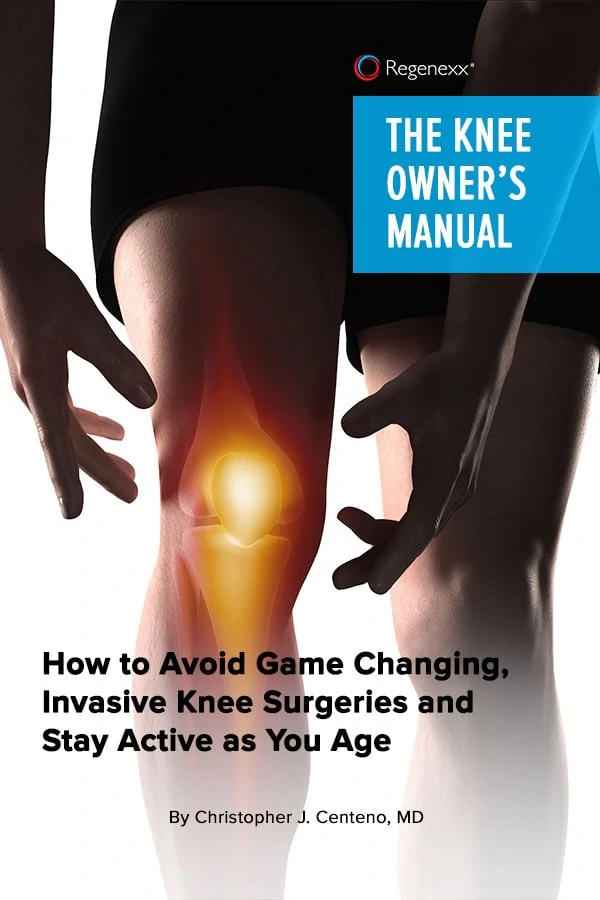Chances are, if you’ve noticed a wrinkle or a gray hair here and there, you also have middle-age meniscus tears. However, just because your doctor finds a meniscus tear on an MRI doesn’t mean you need surgery. This is true even if you have knee pain as meniscus tears often show up on MRIs whether there’s knee pain or not. In other words, you may have meniscus tears and some knee pain, while your friend has meniscus tears with no knee pain. So the presence of meniscus tears shouldn’t automatically be determined to be the source of your knee pain, yet, unfortunately, in the U.S., with meniscus surgery being one of the most common orthopedic surgeries, it often is.
In fact, whether meniscus tears are contributing to knee pain or not, the results of study after study on meniscus surgery are revealing that meniscus surgery, in general, is on its last leg. So if you’re considering surgery for middle-age meniscus tears, mounds of research have spoken loud and clear: meniscus surgery simply isn’t the solution! Let’s first learn a little more about meniscus tears and meniscus “repair,” and then we’ll highlight a few of these studies.
Want to Get Back to What You Love, Without Surgery and Medication?
Middle-Age Meniscus Tears: We All Have Them
The meniscus is a figure-8-shaped piece of cartilage that rests atop each tibia, the long lower-leg bone that forms the bottom portion of the knee joint. The meniscus not only acts as a shock absorber for the knee joint and helps provide a smooth surface for movement of the joint but also protects the knee cartilage above it and gives us a little bounce in our step. Without the meniscus and cartilage, the upper leg bone would directly meet the lower leg bone at the knee joint—something that occurs when someone has severe bone-on-bone knee arthritis.
When there is trauma to the knee, for example a sports injury, the meniscus can suffer a traumatic tear, but meniscus tears also occur with the natural wear and tear of aging. With the latter, surgery on those wear-and-tear middle-age meniscus tears is no more medically necessary than having a few lines on your face surgically lifted. How do we know this? Because there’s overwhelming research that backs this up (see more below).
Meniscus “Repair” Is Rarely Just a Repair
The first thing to point out here is that meniscus surgery is often referred to as meniscus repair. This brings to mind the idea of perhaps stitching or otherwise somehow putting the tear back together to create a full meniscus again. However, about 96% of meniscus repair surgeries aren’t actually repairs; they are excisions. This means the torn piece or pieces of the meniscus are cut out (excised). So does this get rid of the tear? Yes, however, at the high price of losing a chunk of the meniscus along with it. Think about this for a minute: meniscus “repair” usually means cutting out chunks of meniscus to “repair” a tear.
It’s easy to grasp how problematic this can be. When pieces of meniscus are cut out, this weakens the meniscus and can result in a number of issues. The meniscus is less able to stay anchored in the joint, creating instability as it slides around and lessening its ability to protect and evenly cushion the joint (see the video below for an live image of this). A weakened meniscus can create a knee environment that is more susceptible to injuries and that experiences greater wear and tear.
The Research on Meniscus Surgery Can’t Be Ignored
Let’s follow a reverse timeline of a handful of studies revealing the problems with meniscus surgery.
- 2017: Patients who have meniscus surgery are three times more likely to need a knee replacement
- 2016: Meniscus surgery was found to be no better than no surgery for “mechanical symptoms” of the knee, such as locking or catching, that are believed to be
- 2014: Those who undergo even partial meniscus surgery walk with more force on the whole leg (likely due to less meniscus cushioning in the joint, which over time, leads to arthritis. This study was investigating why those who have meniscus surgery have an increased risk of arthritis.
- 2013: In subjects who didn’t have arthritis, meniscus surgery was no better than no surgery.
- 2012: Those who have meniscus surgery fare no better than those who just have physical therapy without surgery.
The beginning of what is sure to eventually be the end of meniscus surgery as we know it dates back fifteen years ago (2002) when an orthopedic surgeon from Baylor College of Medicine published a high-level study that found that knee debridement, which was popular at the time and was done to clean out an arthritic knee that has degenerative meniscus tears, was no better than a fake (or placebo) knee procedure.
The upshot? Meniscus surgery really isn’t the solution to meniscus tears in general, nor middle-age meniscus tears, and, thankfully, today, it’s not the only option out there. The goal is to determine the true source of the knee pain and treat the source and/or the meniscus if necessary. In very rare instances meniscus surgery may be necessary, but with the nonsurgical options for meniscus tears today, using surgical orthopedics to address middle-age meniscus tears is overkill and usually creates more problems than it solves.

